Dell Gaming Monitor - Best Buy
Best Gaming Monitors 2021: Budget, Curved, G-Sync and More
Included in this guide:

Gaming monitor options keep growing with new brands, features and ever-growing capabilities. It's an exciting time to be a PC gamer, but that also means that picking the best gaming monitor for your rig is growing more complicated every day. The selection can be overwhelming, from screen-smoothing technologies (Nvidia G-Sync and AMD FreeSync) to visually stunning refresh rates that can reach a mind-blowing 360 Hz. For pixel addicts, there are dense 4K screens that are just as hard on the bank account as they are on graphics cards. Thankfully, we've got plenty of excellent picks for you to upgrade your tired old monitor.
Choosing the Best Gaming Monitor for You
When seeking the best gaming monitor for your rig, there are different panel types vying for your eyeballs — IPS, TN, VA and even OLED — each with its own pros and cons. You can't forget about screen size and aspect ratio, which affect your views, desk space and, again, bank account. And we haven't even discussed bonuses, like speakers, RGB or port selection. How's a gamer to choose with all of these options?
For a deep dive into how to pick the best monitor--gaming or otherwise--check out our PC Monitor Buying Guide. Below is a list of the best gaming monitors out right now, based on our own testing.
When trying to buy the best gaming monitor for your PC, consider the following:
- G-Sync or FreeSync? G-Sync only works with PCs with Nvidia graphics cards, while FreeSync only works with systems using AMD ones. You can technically run G-Sync on a FreeSync-only monitor, but performance isn't guaranteed. FreeSync monitors tend to be cheaper, but performance is comparable. For a detailed comparison of the two technologies' performance, see our Nvidia G-Sync vs. AMD FreeSync comparison article.
- For image quality, TN < IPS < VA.Generally speaking. Typically, TN monitors are the fastest but cheapest, due to weaker viewing angles. IPS displays have slightly slower response times but better color than VA monitors. The best gaming monitors for contrast are VA, but VA also has slower response times.
- Refresh rates: bigger is better. This number explains the number of times your monitor updates with new information per second — stated in hertz (Hz) — and, therefore, how many frames per second (fps) the monitor can display. Bigger numbers mean smoother images. Refresh rate is especially important for gamers, so you'll want to shoot for a monitor with at least 75 Hz (most gaming monitors offer at least 144 Hz), combined with the lowest response time you can find.
The Best Gaming Monitors You Can Buy Today
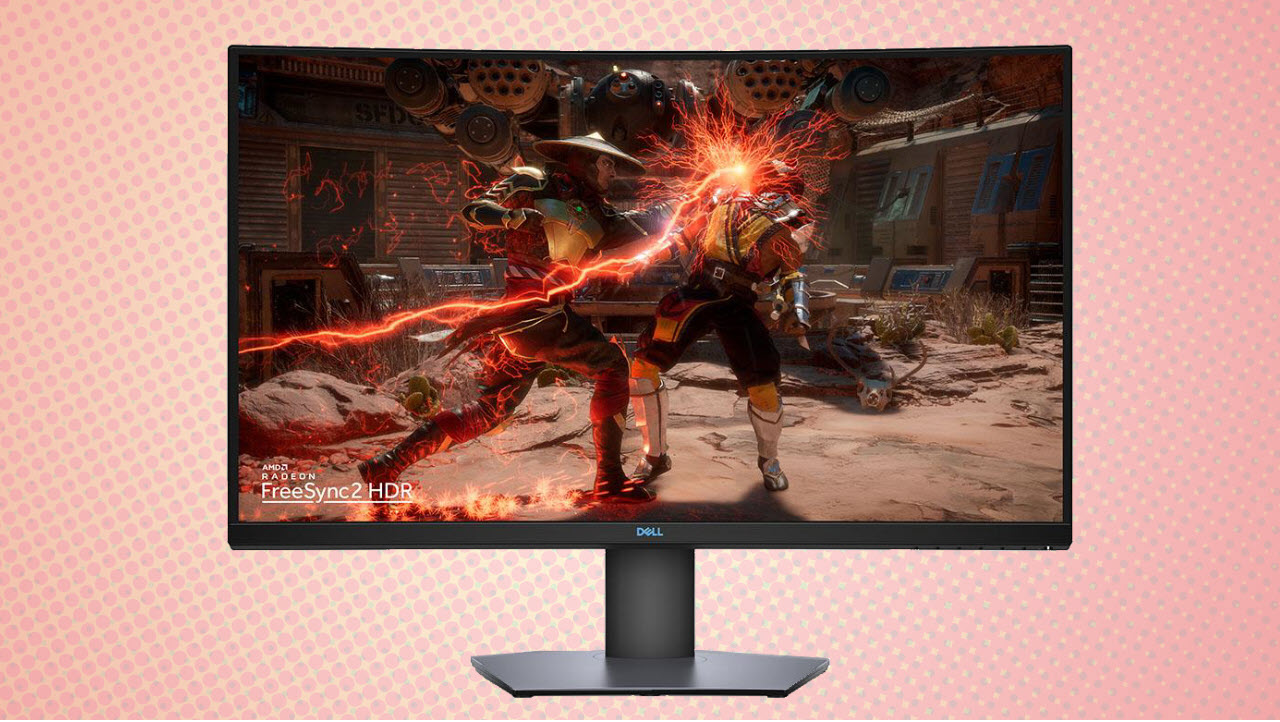
1. Dell S3220DGF
Best Gaming Monitor
Specifications
Screen Size & Aspect Ratio: 32 inches, 16:9
Resolution: 2560 x 1440 @ 165 Hz
Panel Type: VA
Refresh Rate: 165 Hz
Response Time (GTG): 4ms
Adaptive-Sync: FreeSync Premium Pro
Reasons to buy
+High contrast and brightness +165Hz refresh rate +Color-accurate +Nice build quality
Reasons to avoid
-No sRGB mode -No gamma presets
The Dell S3220DGF is the best gaming monitor for most (currently available here). For starters, it boasts a fast refresh rate, low response time plus FreeSync Premium Pro for fighting screen tearing with both standard and HDR content. On top of that, this 32-inch monitor offers plenty of vertical screen real estate without the need for scrolling and 1440p resolution, the current sweet spot between image quality and gaming performance. Its 1800R curve also lends well to immersion, and in addition to gaming, we found that this is also a great monitor for general productivity and anything in between.
Our testing proved the display has low input lag and quick panel response for competitive gamers, and we even got G-Sync Compatibility to work on it, despite it not being certified to do so. This is a fantastic monitor for those with mid to high-budget gaming PCs.
More: Dell S3220DGF review

2. Gigabyte G27F
Best Budget Gaming Monitor
Specifications
Screen Size & Aspect Ratio: 27 inches, 16:9
Resolution: 1920 x 1080
Panel Type: IPS
Refresh Rate: 144 Hz
Response Time (GTG): 1ms
Adaptive-Sync: FreeSync Premium
Reasons to buy
+Good contrast +Superb overdrive
Reasons to avoid
-Slightly dark gamma -No sRGB gamut option
If you can find it for around $250 (we tested it when it was $220) Gigabyte's G27F is the cheapest 27-inch on this page but still offers stellar gaming performance, elevated by a fantastic overdrive that's one of the best implementations we've seen lately. At max setting, the monitor's overdrive offered a picture void of visible blur or ghosting artifacts.
In terms of speed, this 1080p screen held its own against other 144 Hz monitors when it came to response time and input lag. And speaking of that FHD resolution, the G27F's fast refresh rate made up for its low pixel density when reaching 144 fps.
In terms of image quality, this screen offers rich and saturated color ratio and contrast that hit an impressive 1,165:1 after our recommended calibration settings (see page 1 of our review). At this price, the G27F is hard to top in the 27-inch category.
If you really want to stay under $200 though, check out our review of the Acer XFA240, which is usually $200 or cheaper.
More: Gigabyte G27F review
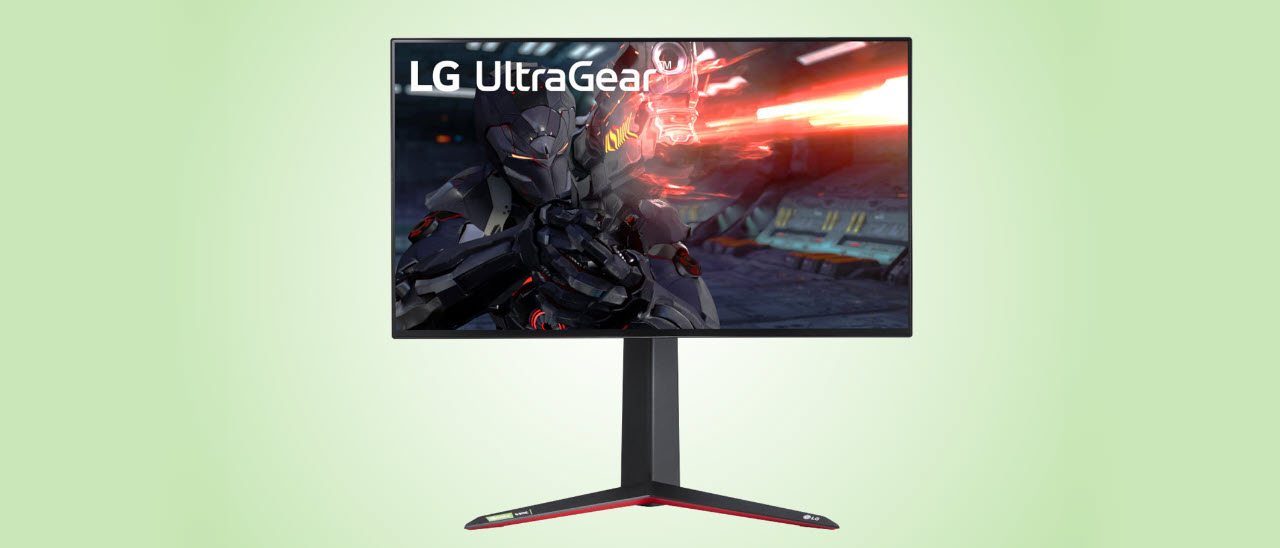
3. LG 27GN950-B
Best 4K Gaming Monitor
Specifications
Screen Size & Aspect Ratio: 27 inches,16:9
Resolution: 4K
Panel Type: IPS
Refresh Rate: 144 Hz
Response Time (GTG): 1ms
Adaptive-Sync : G-Sync Compatible, AMD FreeSync Premium Pro
Reasons to buy
+Excellent HDR +Wide and accurate color gamut +Fast and responsive
Reasons to avoid
-Oversaturated sRGB mode
For a sharp, high-res, premium gaming experience, the LG 27GN950-B is the best 4K gaming monitor. This screen achieved some of the best input lag scores we've ever seen, with response time numbers falling in line with other 144 Hz monitors. If you have a powerful enough graphics card to support high frame rates in 4K, this monitor will have no problem keeping up.
Games will look extra colorful on the LG 27GN950-B, thanks to a color gamut that extends up to a whopping 133.9% of sRGB. HDR, meanwhile, looks amazing, due to the monitor's edge array backlight and local dimming feature. HDR content enjoyed an 8,475.3:1 contrast ratio, making this a great substitute for a pricier FALD monitor.
But if you're looking for a larger 4K screen or other features, check out our best 4K gaming monitors list.
More: LG 27GN950-B review
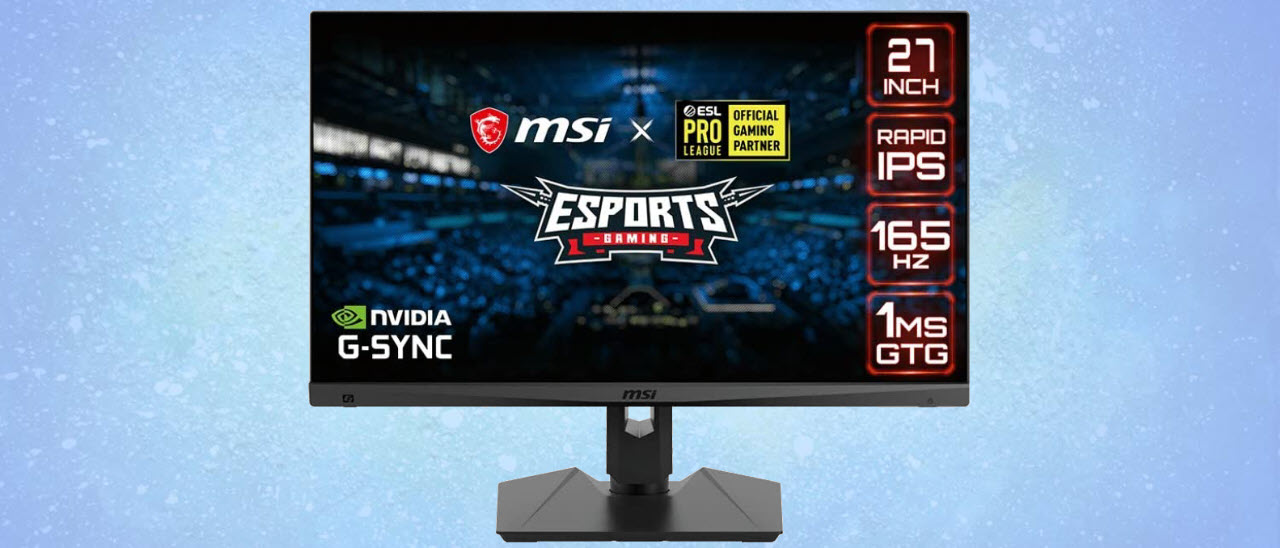
4. MSI Optix MAG274QRF-QD
Best Gaming Monitor for Color
Specifications
Screen Size & Aspect Ratio: 27 inches / 16:9
Resolution: 2560 x 1440
Panel Type: IPS
Refresh Rate: 165 Hz
Response Time (GTG): 1ms
Adaptive-Sync : G-Sync Compatible
Reasons to buy
+Huge color gamut +Fast response
Reasons to avoid
-No sRGB mode -Backlight strobe creates artifacts
If you like your games to look extra colorful, the MSI Optix MAG274QRF-QD is the best gaming monitor for your rig. This monitor posted the widest color gamut we've ever recorded: 112.19% of DCI-P3 after our recommended calibration. 90% of DCI-P3 would be impressive, so this is one color-saturated screen.
Contrast is also strong for an IPS panel, hitting 1,129.1:1 after our calibration. And for those concerned about speed, this 165 Hz screen kept up with the 170 Hz Gigabyte M27Q in our testing
Color purists, however, will lament the lack of an sRGB mode, considering the MAG274QRF-QD's sRGB coverage is at 166.33%. Its backlight strobe for fighting motion blur is also a disappointment. You can't use Adaptive-Sync with it, the brightness goes down by about 50% and it created ghosting that resulted in a parallax effect with fast motion. On top of that, this is yet another gaming monitor to offer HDR but without any noticeable image boost over SDR.
But if you can get past those caveats, you'll enjoy the most colorful monitor to ever hit our lab.
More: MSI Optix MAG274QRF-QD review
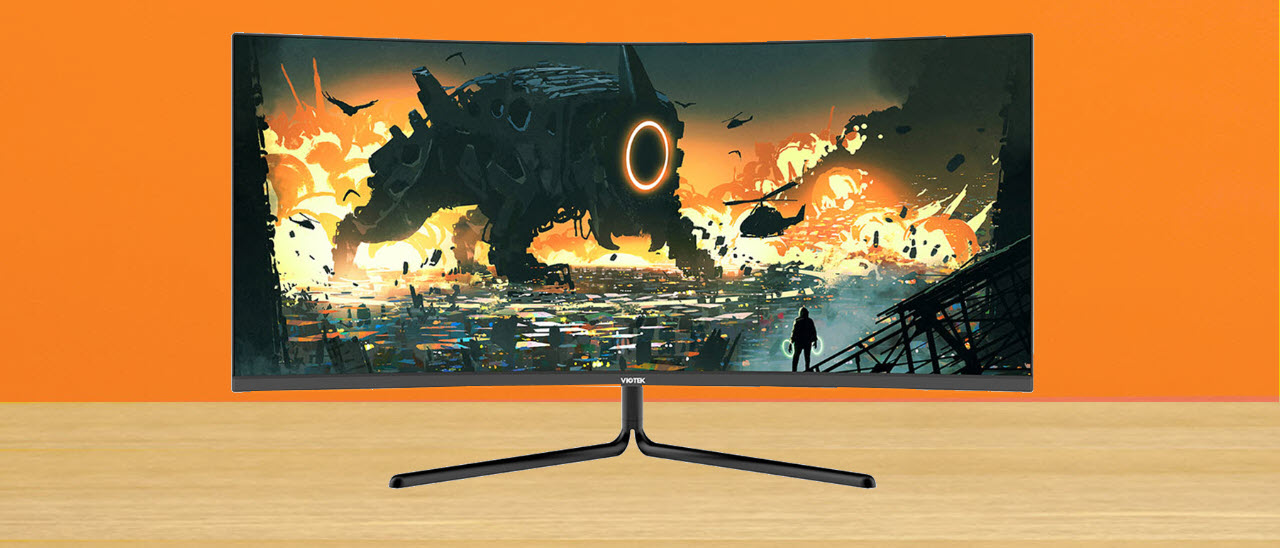
5. Viotek GNV34DBE
Best Curved Gaming Monitor
Specifications
Screen Size & Aspect Ratio: 34 inches, 21:9
Resolution: 3440 x 1440
Panel Type: VA
Refresh Rate: 144 Hz
Response Time (GTG): 4ms
Adaptive-Sync : FreeSync
Reasons to buy
+Contrast +Effective overdrive +HDR
Reasons to avoid
-Needs calibration for best results -Wobbly stand -Low, with no height adjustment
The Viotek GNV34DBE is a well-performing and affordable curved gaming monitor. Its 1500R curve proved to add an immersive touch while gaming, helping to fill our peripheral vision. Despite its tight curve, we still found the GNV34DBE fit for working. There was no distortion, and we enjoyed having multiple windows open for boosted productivity.
But it's not just about the GNV34DBE's curve. You also get a 144 Hz refresh rate and response times and input lag that kept up with 144 Hz rivals during our testing. On the battlefield, we realized the high pixel density of a 1440p screen and smooth gaming without any screen tearing, thanks to FreeSync. Color and contrast were competitive with pricier gaming displays too.
With its edge-lit backlight, the GNV34DBE also makes a good HDR display, offering a noticeable improvement over your typical SDR monitor. At its low price, the build quality of the stand is lacking. But for a speedy gaming monitor with an effective curve, the Viotek GNV34DBE is a solid deal.
More: Viotek GNV34DBE review
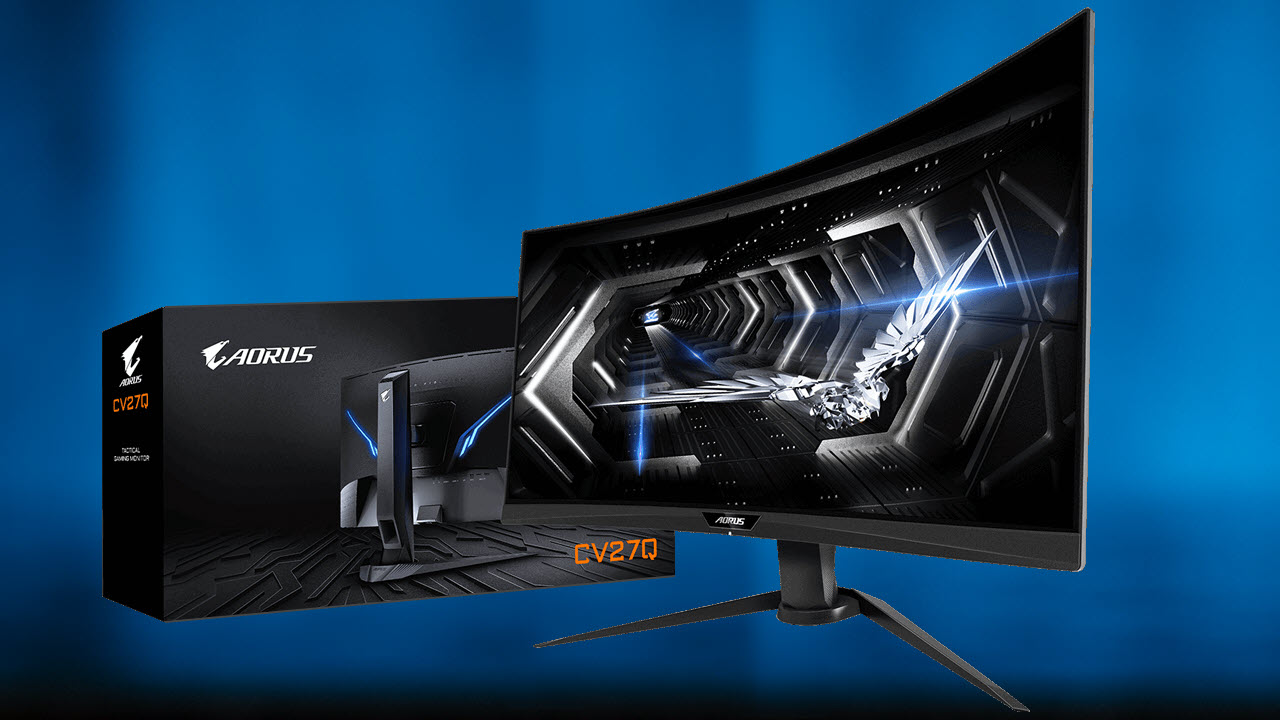
6. Aorus CV27Q
Best 1440p Gaming Monitor
Specifications
Screen Size & Aspect Ratio: 27 inches, 16:9
Resolution: 2560 x 1440
Panel Type: VA
Refresh Rate: 165 Hz
Response Time (GTG): 1ms
Adaptive-Sync: FreeSync Premium Pro
Reasons to buy
+Contrast +Color accuracy +Speed and responsiveness
Reasons to avoid
-Inaccurate sRGB mode -No image controls for HDR
Gigabyte's Aorus CV27Q is the best 1440p gaming monitor when it comes to high-speed gaming performance. With its impressive specs, it shined in our input lag and response time tests when pitted against 144 Hz rivals. Sure, you could get slightly better performance from the 1080p version, the Aorus CV27F, but then you wouldn't be getting that sharper QHD resolution or higher pixel density (109ppi).
With a VA panel offering 3,000:1 contrast, image quality is no joke either. The CV27Q has a low black level that made image depth look great, particularly with HDR titles. But as far as HDR goes, this monitor only goes up to 400 nits brightness; we prefer HDR displays that hit at least 600 nits.
Bonus features include Aorus' active noise cancellation (ANC) feature, which uses two mics on the front bezel to reduce background noise others may hear coming from your
gaming headset, a 1500R curve and RGB lighting on the back. The Asus ROG Strix XG279Q on this page is a hair faster.
Read: Aorus CV27Q review
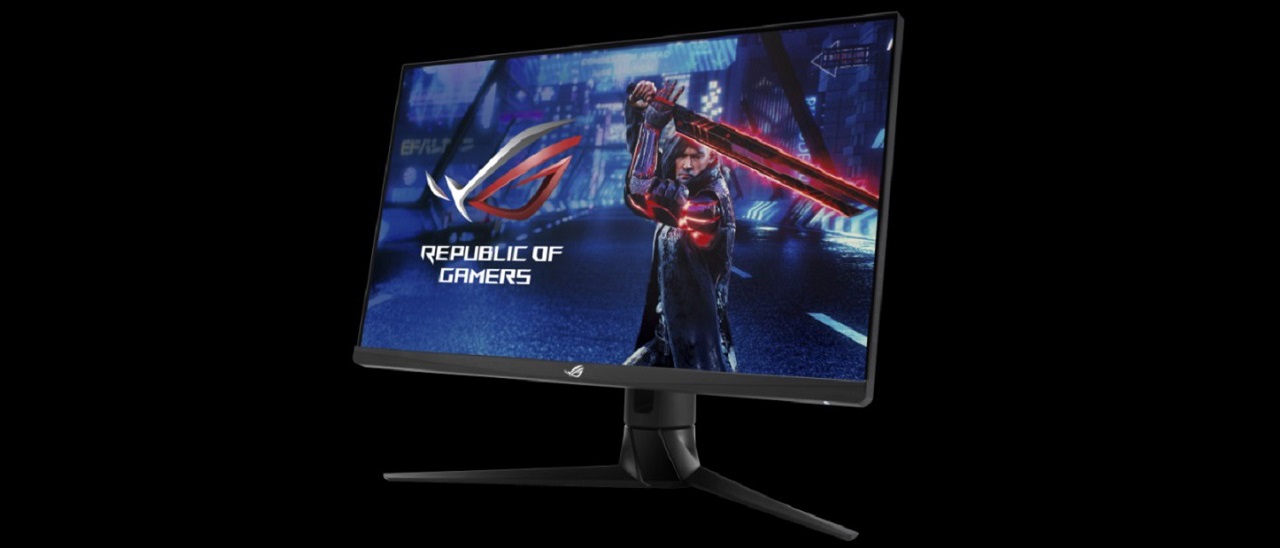
7. Asus ROG Strix XG279Q
Best 1440p Gaming Monitor Splurge
Specifications
Screen Size & Aspect Ratio: 27 inches, 16:9
Resolution: 2560 x 1440
Panel Type: IPS
Refresh Rate: 144Hz (170 Hz with overclock)
Response Time (GTG): 1ms
Adaptive-Sync: G-Sync Compatible
Reasons to buy
+Excellent dynamic contrast +ELMB blur reduction works in tandem with Adaptive-Sync +Better than average HDR
Reasons to avoid
-Needs calibration for best accuracy
If you have extra room in your budget and want to squeeze out that additional drop of performance from your 1440p screen, the Asus ROG Strix XG27AQ may be the best gaming monitor for you. This screen is ready to compete with the speediest of screens, competing well against other 165-170 Hz screens in our response time test and falling just 1-3ms behind in our input lag test.
Out of the box, we recorded solid IPS contrast (1,158.4:1). Of course, you'll want to calibrate to get rid of some visible grayscale tracking errors, but our recommended settings can help you there. This is also an excellent HDR monitor, thanks to a dynamic contrast feature that bumps contrast up to a whopping 22,506.9:1.
Not only does it have the sharper resolution of your dreams, but it's one of the rare monitors to allow you to run blur reduction alongside side screen tear-fighting Adaptive-Sync.
Alternatively, the Asus ROG Strix XG279Q is another fantastic 1440p option with similar performance. But for slightly less money as of writing ($500 versus $570, respectively), the XG279Q features one of the best motion blur implementations we've seen and the rare ability to run motion blur alongside Adaptive-Sync.
More: Asus ROG Strix XG27AQ review
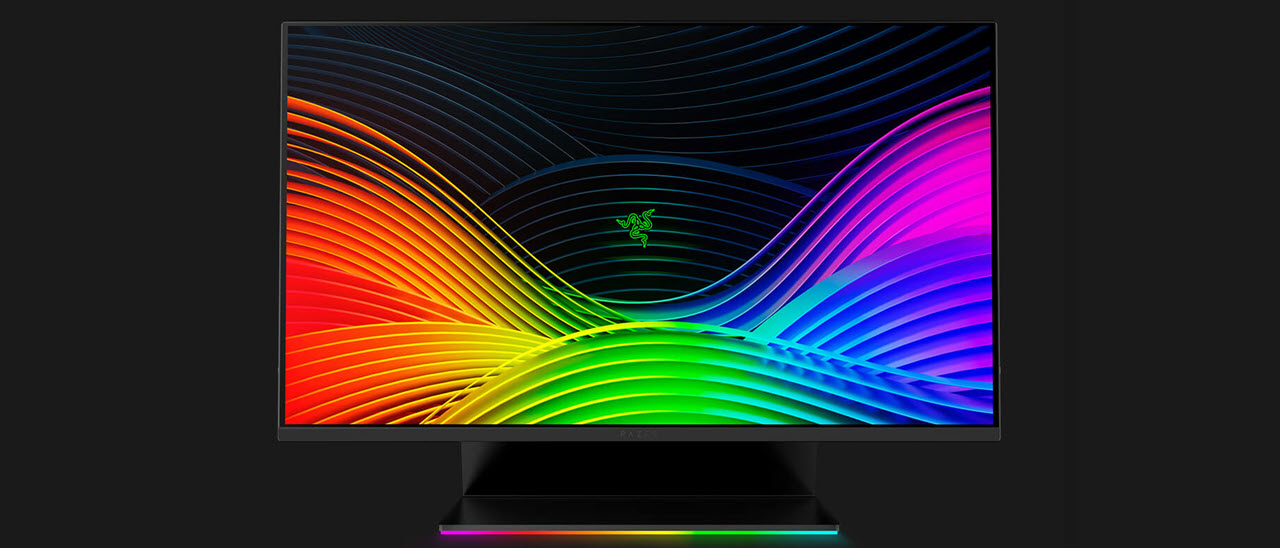
8. Razer Raptor 27
Best 144Hz Gaming Monitor
Specifications
Screen Size & Aspect Ratio: 27 inches, 16:9
Resolution: 2560 x 1440 @ 144Hz
Panel Type: IPS
Refresh Rate: 144 Hz
Response Time (GTG): 4ms
Adaptive-Sync: G-Sync Compatible, FreeSync
Reasons to buy
+Excellent HDR contrast +Saturated color +Near-100% DCI-P3 coverage +Fantastic style and build quality
Reasons to avoid
-No true sRGB color mode -User must manually switch between SDR and HDR modes
The Razer Raptor 27 is the best gaming monitor for 144 Hz refresh rates. It'll make any gamer you know jealous with premium touches, like an RGB stand, flat green cables for cable management and drool-worthy build quality. Plus, HDR delivery is some of the best we've seen in an edge-lit panel yet.
Despite its 144Hz refresh rate, the Raptor 27 was able to stay competitive with 165Hz monitors in our benchmarking. There wasn't significant motion blur, but finicky, pro-level players will have to choose between dealing with it or activating the backlight strobe, which limits you to 120Hz, reduces brightness by 40% and grays out FreeSync and G-Sync Compatibility.
If you like the Raptor 27's design but want more speed, the 2021 Razer Raptor 27 has a 165 Hz refresh rate for $100 more.
More: Razer Raptor 27 review
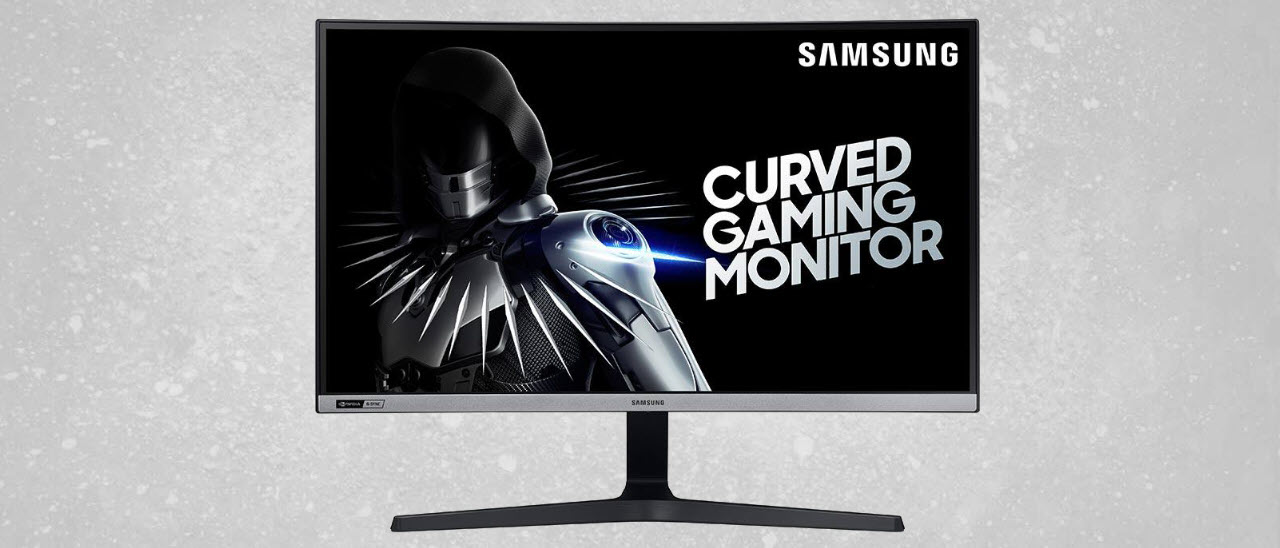
9. Samsung 27-inch CRG5
Best 240 Hz Gaming Monitor
Specifications
Screen Size & Aspect Ratio: 27 inches, 16:9
Resolution: 1920 x 1080
Panel Type: VA
Refresh Rate: 240 Hz
Response Time (GTG): 4ms
Adaptive-Sync: G-Sync Compatible
Reasons to buy
+Good contrast and color accuracy +240 Hz VA panel +Superb gaming performance
Reasons to avoid
-No USB or speakers
For speed demons, a 240 Hz monitor hits the spot. Up until recently, that level of speed required two things: settling for 1080p resolution and a TN panel. But the Samsung 27-inch CRG5 (there's also a 24-inch CRG5) is the best gaming monitor in this class. It's special because it manages that speed in our favorite type of LCD panel, VA. Not only does it deliver the high contrast and saturated color that makes VA popular, but it's also the fastest monitor we've ever tested.
We encountered a few flaws during testing. The biggest one in terms of image quality was an inaccurate HDMI Black Level setting. Plus, the only form of Adaptive-Sync is G-Sync Compatibility. But besides those small caveats, our gaming experience was a record-breaking pleasure.
More: Samsung 27-Inch CRG5 review
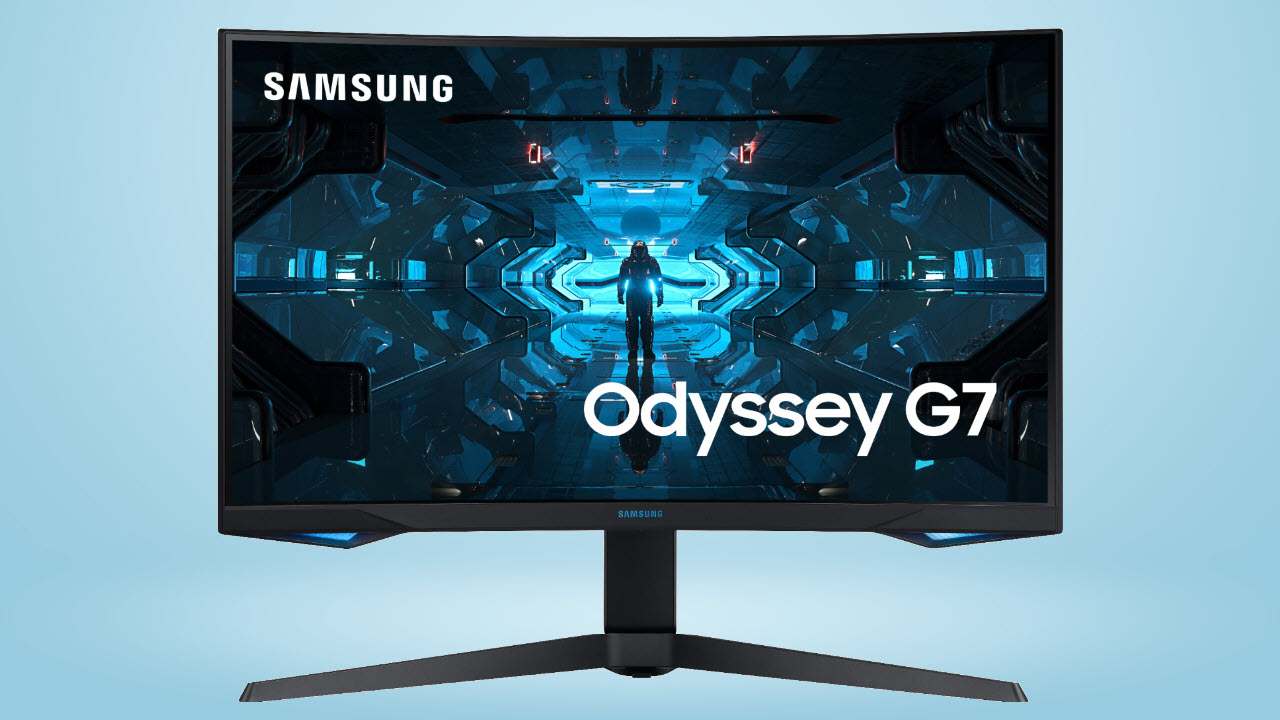
10. Samsung Odyssey G7 32-Inch
Best 32-inch Gaming Monitor
Specifications
Screen Size & Aspect Ratio: 32 inches, 16:9
Resolution: 2560 x 1440
Panel Type: SVA
Refresh Rate: 240 Hz
Response Time (GTG): 1ms
Adaptive-Sync: G-Sync Compatible, FreeSync Premium Pro
Reasons to buy
+Size and shape ideal for gaming or work +Low input lag
Reasons to avoid
-No speakers
The 32-inch Samsung Odyssey G7 is in a class all its own. It's one of Samsung's 1000R screens, meaning it's one of the curviest gaming monitors you can find on the market. If you're a fan of the immersive feel of a curved monitor, the 32" Odyssey G7 will elevate this experience even higher.
At 32 inches, the Odyssey G7's amazing 1000R curve drew us in, whether we were playing games or doing work. With this curvature, we could view productivity apps without any image distortion, and when gaming our vision was filled with action. The 32-inch, 16:9 build offers ample height for productivity and, coupled with 1440p resolution, hits a sweet spot for gaming.
In terms of image quality, the 32-inch Odyssey G7 proved accurate before we even calibrated it while boasting a 2,121:1 contrast ratio, according to our testing.
In our response time benchmarking, this monitor kept up with similarly specced screens, doing justice to the 240 Hz category. If you're looking for high-end speed, image quality and form factor, this is it.
More: Samsung Odyssey G7 32-inch review
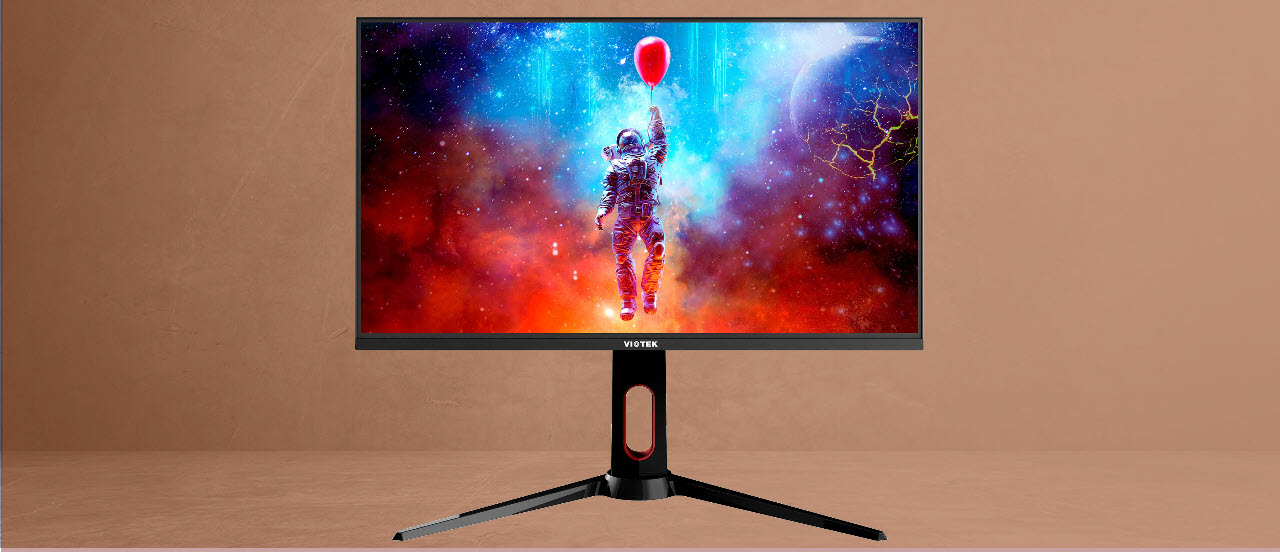
11. Viotek GFI27DBXA
Best 27-Inch Gaming Monitor
Specifications
Screen Size & Aspect Ratio: 27 inches, 16:9
Resolution: 2560 x 1440
Panel Type: IPS
Refresh Rate: 180 Hz
Response Time (GTG): 1ms
Adaptive-Sync: FreeSync
Reasons to buy
+Best-in-class overdrive means no motion blur +Solid build quality
Reasons to avoid
-Switching to HDR is clunky -Needs calibration for best picture
The 27-inch gaming monitor competition is crowded, but the Viotek GFI27DBXA stands out with an incredibly colorful image that's also bright and sharp. The 1440p panel covers 101% of the DCI-P3 color space, according to our testing. Contrast, meanwhile, proved comparable to your typical IPS panel, but the dynamic contrast feature helped when gaming. Combined with the wide color coverage, the image impressed during gaming.
Speed-wise, the GFI27DBXA is ready to play. In our benchmarks, it showed a competitive 6ms response time. With a 180 Hz refresh rate, it fell behind 165 and 170 Hz screens from more premium brands but only by 2-6ms. Plus, its overdrive is one of the best we've seen, ensuring zero perceivable delays for mainstream players. Plus, the monitor feels strong and reliable, despite its lower price.
For a strong alternative, consider the MSI Optix MAG272CQR, which may also be cheaper.
More: Viotek GFI27DBXA review

12. Samsung 49-Inch Odyssey G9
Best Ultrawide Gaming Monitor
Specifications
Screen Size & Aspect Ratio: 49 inches / 32:9
Resolution: 5120 x 1440
Panel Type: SVA (VA)
Refresh Rate: 240 Hz
Response Time (GTG): 1ms
Adaptive-Sync : G-Sync Compatible, FreeSync
Reasons to buy
+Accurate color out of the box +Tight curve delivers maximum immersion
Reasons to avoid
-No motion blur reduction -No speakers
The Samsung 49-Inch Odyssey G9 is one of the most extreme monitors on this page. Not only is it a massive 49 inches diagonally, but it also carries a 1000R curve, the most dramatic curve offered on a gaming monitor today. From a 2-3-feet distance, this panel will fill your view. It's like having two 27-inch, 1440p monitors in one. You'll need nearly 4 feet of desk width and 17 inches of depth to accommodate it, but if you do, you'll enjoy a wraparound gaming environment without image distortion. Are you looking for a smaller ultrawide? The Acer Predator X38 is also excellent.
Testing of the 49-Inch Odyssey G9 revealed excellent contrast (2,152.9:1 after calibration), which climbed to 58,881.7:1 when it came to HDR testing. This is a bright monitor with a sharp picture and accurate DCI-P3 and sRGB color.
At this price, though, we'd expect a little more. For example, the monitor doesn't offer any blur reduction. However, we typically opt for Adaptive-Sync over motion blur reduction, and motion blur shouldn't be an issue if you have a powerful enough graphics card. You also don't get any speakers or, oddly, a framerate counter. But with solid image quality and a whole lot of speed for an ultrawide, some sacrifices are worth making.
More: Samsung 49-Inch Odyssey G9 review
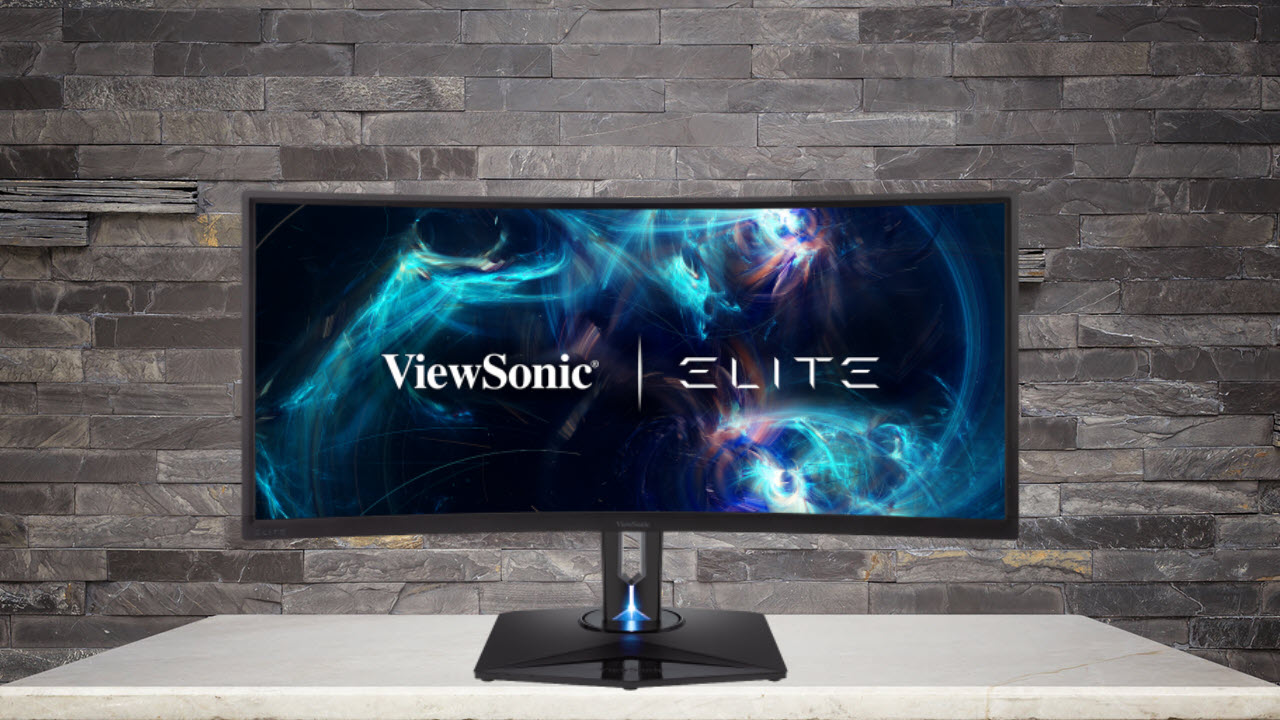
13. ViewSonic Elite XG350R-C
Best Budget Ultrawide Gaming Monitor
Specifications
Screen Size & Aspect Ratio: 35 inches, 16:9
Resolution: 3440 x 1440
Panel Type: VA
Refresh Rate: 100 Hz
Response Time (GTG): 3ms
Adaptive-Sync: FreeSync
Reasons to buy
+Excellent contrast and accurate color +Fast response from 100 Hz refresh rate +Good build quality +Loud speakers
Reasons to avoid
-No additional contrast in HDR mode -No extended color
Currently going for $660, the ViewSonic Elite XG350R-C is cheaper than many other 35-inch ultrawides and ultrawides with fewer features (there's even RGB lighting on the back of the XG350R-C). But what you'll really love about the XG350R-C is its vivid and accurate color that makes textures pop, skin tones look natural, and everything looks more realistic.
If you want life-changing HDR or to use HDR with Adaptive-Sync, look elsewhere. But in addition to a 21:9 aspect ratio, the Elite XG350R-C employs an 1800mm curve radius that engulfed us with solid image quality, making for an immersive ultrawide experience.
More: ViewSonic Elite XG350R-C review
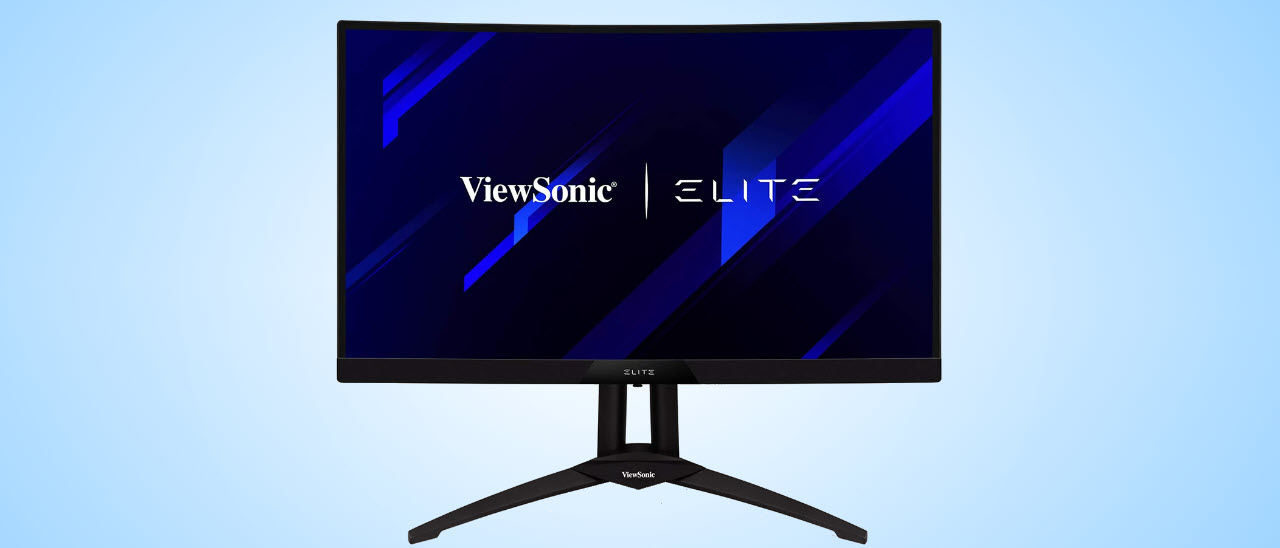
14. ViewSonic Elite XG270QC
Best Budget HDR Gaming Monitor
Specifications
Screen Size & Aspect Ratio: 27 inches, 16:9
Resolution: 2560 x 1440
Panel Type: VA
Refresh Rate: 165 Hz
Response Time (GTG): 3ms
Adaptive-Sync: FreeSync Premium Pro
Reasons to buy
+Build quality +Accurate color +Adaptive-Sync with HDR
Reasons to avoid
-No sRGB mode
If you've wanted to try out an HDR monitor but can't afford the best HDR monitors with FALD backlights, the ViewSonic Elite XG270QC (available here) is worth a look. Admittedly, it's not quite FALD-quality, but with edge-lit backlighting, the runner-up, and a VA panel, this monitor's HDR performance will give you a noticeable upgrade over SDR.
This monitor kept up with other 165 Hz screens in our benchmarks, such as the Dell S3220DGF above. ViewSonic's XG270QC also delivers 1440p resolution with on-point gamma. Even without HDR, contrast hit 2,897:1 with our calibration settings. Plus, you get a surprisingly loud pair of 3W speakers.
For the ultimate HDR gaming, though, you'll want to visit our Best 4K Gaming Monitors list.
More: ViewSonic Elite XG270QC review
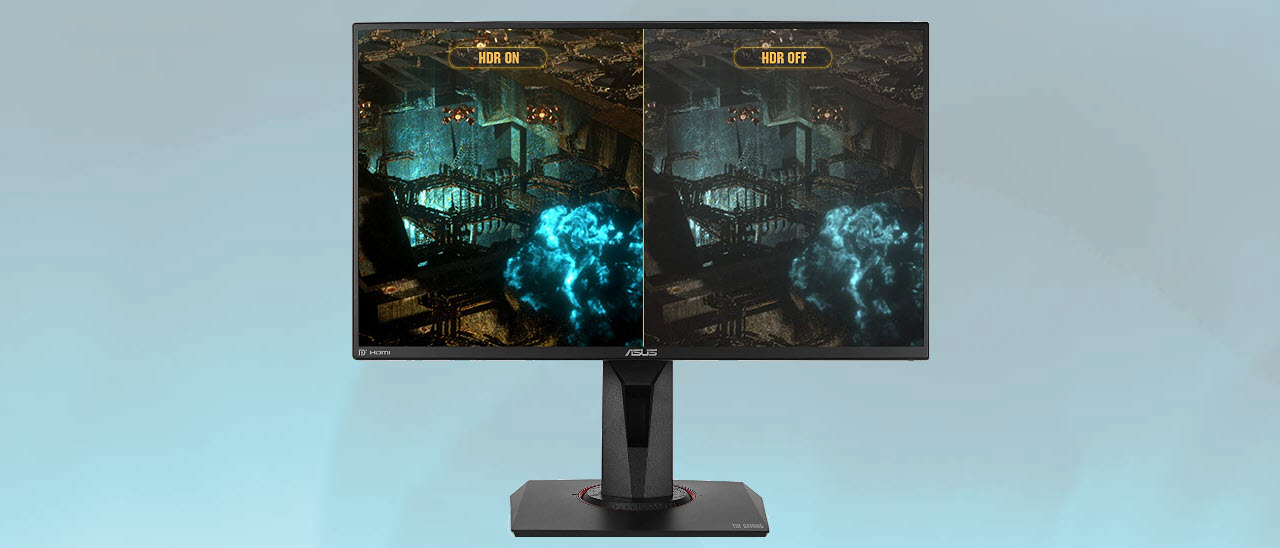
15. Asus TUF VG259QM
Best High-Refresh Gaming Monitor
Specifications
Screen Size & Aspect Ratio: 24.5 inches / 16:9
Resolution: 1920 x 1080
Panel Type: IPS
Refresh Rate: 240 Hz (280 Hz with overclock)
Response Time (GTG): 1ms
Adaptive-Sync: G-Sync Compatible
Reasons to buy
+Phenomenal gaming with simultaneous Adaptive-Sync and ELMB
Reasons to avoid
-Light gamma -HDR doesn't pop
The Asus TUF Gaming VG259QM isn't the only 240 Hz monitor here, but it's the only one that overclocks to an impressive 280 Hz so impressively. It's not only about the high refresh rate, though. It's also the ability to incorporate FreeSync (despite lacking certification) or G-Sync Compatibility alongside Asus' Extreme Low Motion Blur (ELMB) feature that bests any monitor's overdrive. With those features and 280 Hz, our inputs almost felt predicted. This is the kind of monitor that could help your game. Asus' VG259QM topped our response time test and did admirably in terms of absolute input lag.
One of the downsides of this monitor is its HDR capability. Using an IPS panel with 1,000:1 contrast and only DisplayHDR 400 certification, HDR won't look much better than SDR content. And, of course, you'll need a decent graphics card to make the most out of this high-refresh screen.
But if you want one of the fastest monitors on the market, the VG259QM is up there. There are 360 Hz monitors now, but 280 fps is more achievable than 360 fps. And at $319, the VG259QM is favorably priced.
More: Asus TUF Gaming VG259QM review
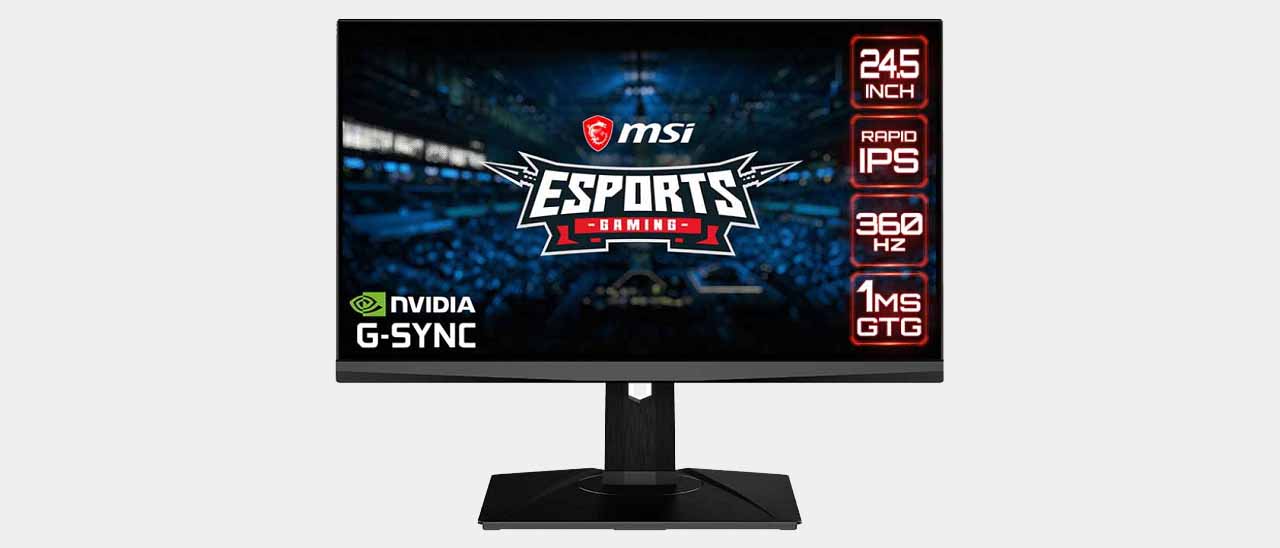
16. MSI Oculux NXG253R
Best Gaming Monitor for eSports
Specifications
Screen Size & Aspect Ratio: 24.5 inches / 16:9
Resolution: 1920 x 1080
Panel Type: IPS
Refresh Rate: 360 Hz
Response Time (GTG): 1ms
Adaptive-Sync: G-Sync
Reasons to buy
+Good contrast with variable backlight +Incredibly smooth and fast
Reasons to avoid
-No extended color -No speakers
If you're the kind of gamer who can take advantage of things like 8,000 Hz mice, the most advanced GPU, and play at a competitive level, the MSI Oculux NXG253R is as good as it gets. We've tested a few 360 Hz monitors, namely the Asus ROG Swift PG259QN, Alienware AW2521H, and Acer Predator X25, and they're all amazingly fast and impressive. However, MSI's 360 Hz monitor stands above them all as the fastest screen we've ever tested.
Our benchmarking recorded the NXG253R's absolute input lag at 17ms, 1ms faster than the next fastest 360 Hz monitor (Asus' PG259QN). The NXG253R matched the other 360 Hz screens with a 3ms result when it came to response time. You also get Nvidia's Reflex latency analyzer, plus G-Sync all the way down to 1 Hz. Nothing is missing for gaming performance here.
There are some things missing, though. Despite the high price (especially for a 1080p monitor), the NXG253R doesn't have speakers. And its color gamut is sRGB, rather than the more colorful DCI-P3 that's increasingly popular among gaming monitors. But this is still a bright screen with decent contrast (1,190.6:1) for an IPS panel. HDR is aided by a variable backlight, which brings contrast to a high 7,972.5:1 with HDR content.
If you're ready to leap to 360 Hz, the fastest refresh rate currently available on a PC monitor, the NXG253R is the best of the best for speed.
More: MSI Oculux NXG253R review
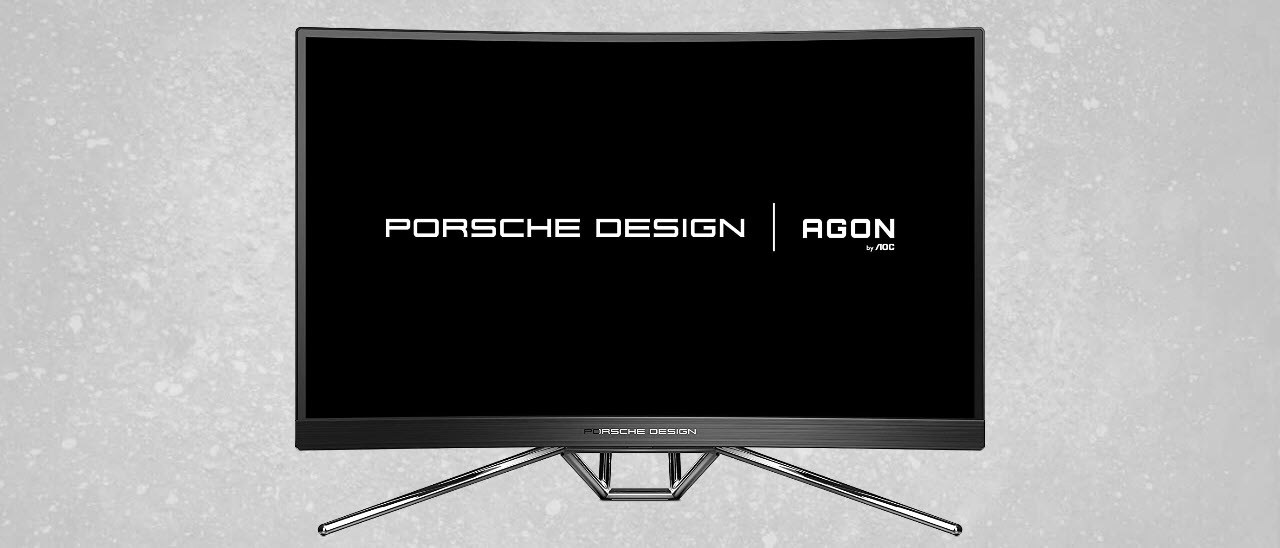
17. Porsche Design AOC Agon PD27
Best Gaming Monitor Splurge
Specifications
Screen Size & Aspect Ratio: 27 inches, 16:9
Resolution: 2560 x 1440
Panel Type: VA
Refresh Rate: 240 Hz
Response Time (GTG): 0.5ms
Adaptive-Sync: FreeSync Premium Pro
Reasons to buy
+Wide, accurate color gamut +Build quality, styling
Reasons to avoid
-Backlight strobe causes some smearing -Expensive
The Samsung 27-inch CRG5 provides incredible speed at 1080p resolution, and the Porsche Design AOC Agon PD27 takes things to the next level, including a higher resolution, shorter response time, and a price tag that's more than twice the size.
For most, the CRG5 is in the sweet spot for a 240Hz monitor. Its 1080p resolution will require less graphics power than the 1440p PD27. When it came to our speed benchmarks, the PD27 was 1ms faster than the CRG5 in the response time test and 2ms slower in the absolute input lag test. So performance there is comparable, but the PD27 is also in a different style class.
With a unique metallic stand reminiscent of a racecar's roll cage, LED lighting, including a projector that casts a customizable Porsche Design logo, and even its own remote, this monitor is as much about premium looks as it is about premium performance. If you want a little bit of it everything, it's tough to beat this stylish monitor.
More: Porsche Design AOC Agon PD27 review
Savings on Best Gaming Monitors
When shopping for any gaming monitor, including those above, you may save some money by checking out our lists of best computer monitor deals, Dell Coupon Codes, Lenovo coupon codes, LG coupon codes or Newegg coupon codes.
Dell Gaming Monitor - Best Buy
Source: https://www.tomshardware.com/reviews/best-gaming-monitors,4533.html
Posted by: mcclainrisfy1972.blogspot.com

0 Response to "Dell Gaming Monitor - Best Buy"
Post a Comment